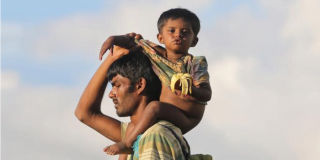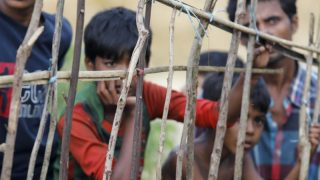This week the Senate passed the “Migration And Maritime Powers Legislation Amendment (Resolving The Asylum Legacy Caseload) Bill 2014”. The bill results in sweeping changes to Australia’s treatment of asylum seekers.
Reintroduction of Temporary Protection Visas
When asylum seekers arrive in Australia they must apply for a protection visa. A protection visa gives them the freedom to live within the Australian community. The legislation introduces temporary protection visas, which mean that instead of being offered permanent settlement in Australia, refugees that arrived by boat before July 19, 2013 will be granted only temporary settlement. Those who arrived after July 19, 2013 will still be ineligible for settlement in Australia under any conditions. TPV’s were first introduced by the Howard government and revoked when the Rudd government came to power. The experience in the Howard years was that TPV’s made life in Australia traumatic for refugees, for in granting them only a temporary horizon they were unable to settle into life in Australia and lived with the fear that they may be forced back to the country they fled. The government says that TPV’s are an essential plank of its attempt to deter people from arriving in Australia via boat.
Changes to the Review Process
When an asylum seeker applies for protection the case is heard by an officer from the Department of Immigration And Border Protection. The case officer will determine whether their application is approved or rejected. Should an asylum seeker be unhappy with the decision reached they previously had the right to have the case considered by the Refugee Review Tribunal. The RRT would review the case from the ground up and make a determination that was binding upon the Department of Immigration and Border Protection. Historically a large number of reviews found the original decision to be faulty and overturned them. In other words, without the RRT Australia would have sent hundreds of asylum seekers back to countries where they would have faced imprisonment, violence, and even death.
Under the new legislation the Refugee Review Tribunal will no longer review cases. This function will be fulfilled by a new body within the Refugee Review Tribunal system that will conduct a limited review that will not consider any new evidence.
Fast Track Assessment Of Existing Cases
Approximately 30,000 asylum seekers are already present within Australia. The legislation allows them to work while their claim is being assessed and for their cases to be fast tracked via a truncated assessment process. On the one hand, this is good news for people whose lives were in limbo. On the other hand, they will only be granted a TPV and the fast track system process means it is likely we will make some poor decisions that will see people sent back to places where they will face persecution.
Restricted Definition of Refugees
The act tightens the definition of what makes a person a refugee. For example, if it can be shown that a person could be safe somewhere within their country of origin they will not be granted refugee status, even if it is not economically or socially viable for them to go and live in that new area. Similarly, if it’s possible they could change their behaviour to avoid persecution they will not be eligible for protection. For example, somebody who had been outspoken in opposing the government could stop being outspoken and thus would not be eligible for protection.
Removal Of The Right Of The Court To Overturn Government Decisions
References to the International Refugee Convention have been removed from the migration act. The government states that this is not an attempt to avoid meeting our obligations under the Convention, but to prevent a challenge to the interpretation of those obligations by the executive government.
The Detention of Children
In order to secure the agreement of the crossbench senators the government agreed to the release from detention of children currently held in facilities on Christmas Island. This should not be mistaken as the policy that all children will be released from detention. All asylum seekers, including children, who have arrived since July 19, 2013 will remain in detention centres on Nauru or Manus Island.
At the centre of the international protection system is the idea that refugees should be protected. The act seems designed to water down Australia’s obligations in this area, to make it more difficult for refugees, particularly those who arrived by boat, to find the protection they so desperately need.







What the changes to the migration act mean http://t.co/tPs3xvPchI